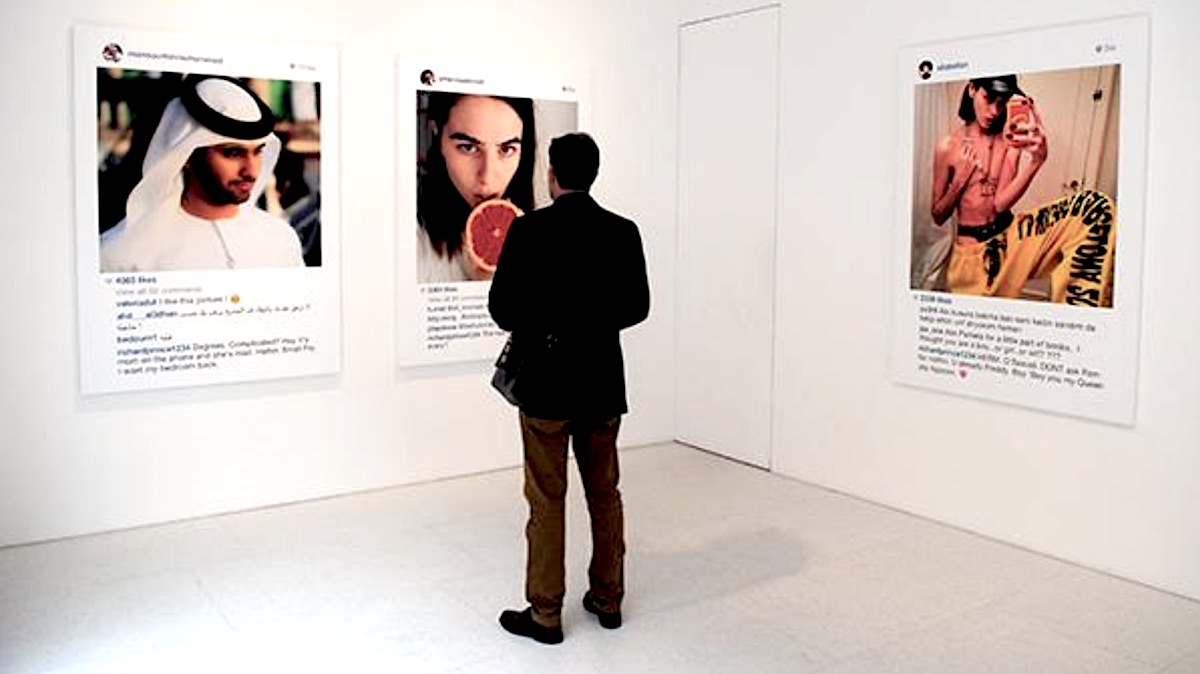Richard Prince and his affiliated galleries, Gagosian and Blum & Poe, (now just Blum) have reached settlements in two copyright lawsuits lodged against him by photographers whose works were utilised without consent in his “New Portraits” series in 2014/2015. The resolution arrives after protracted legal battles questioning the bounds of copyright protections surrounding Prince’s appropriation of Instagram screenshots onto Canvas, accompanied by his commentary.
In the case of Eric Mcnatt v. Richard Prince and Blum & Poe, United States District Judge Sidney H. Stein presided over the proceedings. Per court documents filed in the Southern District of New York, the defendants are now restrained from reproducing, modifying, or distributing the contested photograph, Kim Gordon 1, along with its associated Instagram post or incorporating the artwork into future publications based on the series. Mcnatt, the original photographer, has been awarded compensation equivalent to five times the sales price of Prince’s artworks sold by Blum & Poe and incurred costs agreed upon by the parties.
Responding to the settlement, Matt Gaughan, Prince’s studio manager, expressed satisfaction, highlighting the resolution’s culmination after eight years of litigation and substantial financial demands from the plaintiffs. Gaughan underscored the absence of an admission of infringement, characterising the settlement as a pragmatic conclusion allowing both Prince and the affected artists to progress in their respective endeavours.
The second lawsuit, Donald Graham v. Richard Prince, Gagosian Inc., and Lawrence Gagosian, centred on the photograph “Rastafarian Smoking a Joint,” initially captured by Graham and subsequently appropriated by Prince for his “New Portraits” exhibition at Gagosian’s Madison Avenue gallery in 2014 and later in London Britannia Street 2015. Judge Stein’s ruling imposes similar restrictions on Prince’s use of Graham’s work and awards Graham expenses proportional to the retail value of Prince’s artwork, along with incurred costs.
Prince’s artistic practices have long stirred controversy, notably his appropriation of existing works without prior authorisation. Defending his approach under fair use exceptions to federal copyright laws, a provision that allows limited use of copyrighted material without permission from the owner under certain circumstances, Prince has faced legal scrutiny, including the unsuccessful lawsuit brought by French photographer Patrick Cariou.
Despite these legal skirmishes, Prince remains steadfast in his artistic convictions, adamantly refusing to seek permission for his appropriations. The enduring legal saga surrounding his work underscores broader debates concerning artistic interpretation, copyright protections, and the transformative nature of contemporary art.
While Blum & Poe (Blum) and Gagosian refrained from immediate comment, resolving these lawsuits marks a significant chapter in the ongoing discourse surrounding artistic integrity and intellectual property rights within the contemporary art world. These settlements could influence future artistic practices, particularly those involving appropriating existing works. They may shape the evolving understanding of copyright protections in modern art.
Top Photo: © Paul Black for Artlyst

